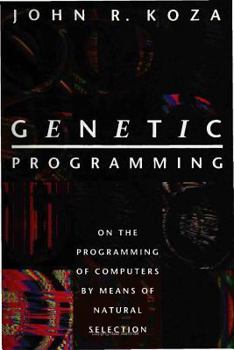Genetic Programming: On the Programming of Computers by Means of Natural Selection
(Part of the Complex Adaptive Systems Series)
Select Format
Select Condition 
Book Overview
In this ground-breaking book, John Koza shows how this remarkable paradigm works and provides substantial empirical evidence that solutions to a great variety of problems from many different fields can be found by genetically breeding populations of computer programs. Genetic programming may be more powerful than neural networks and other machine learning techniques, able to solve problems in a wider range of disciplines. In this ground-breaking book, John Koza shows how this remarkable paradigm works and provides substantial empirical evidence that solutions to a great variety of problems from many different fields can be found by genetically breeding populations of computer programs. Genetic Programming contains a great many worked examples and includes a sample computer code that will allow readers to run their own programs.In getting computers to solve problems without being explicitly programmed, Koza stresses two points: that seemingly different problems from a variety of fields can be reformulated as problems of program induction, and that the recently developed genetic programming paradigm provides a way to search the space of possible computer programs for a highly fit individual computer program to solve the problems of program induction. Good programs are found by evolving them in a computer against a fitness measure instead of by sitting down and writing them.
Format:Hardcover
Language:English
ISBN:0262111705
ISBN13:9780262111706
Release Date:December 1992
Publisher:Bradford Book
Length:836 Pages
Weight:4.25 lbs.
Dimensions:1.7" x 7.2" x 10.3"
Age Range:18 years and up
Grade Range:Postsecondary and higher













